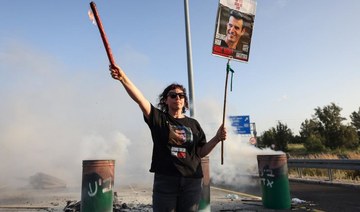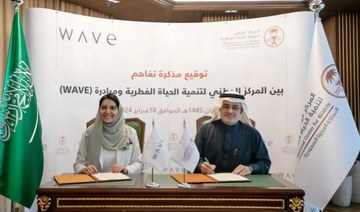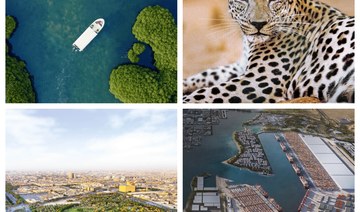LAGOS: Fishing boats look like specks alongside Egina, which has been moored for the last month in Lagos. Even the container ships that normally dominate the port look like small boats.
The floating production storage and offloading facility (FPSO), developed by the French group Total, looks a lot like a giant Lego set.
Everything about it is huge: its weight (220,000 tons), length (330 meters/1,083 feet) and width (60 meters). At 33 meters, it’s as high as a 10-story building.
The vessel is in its final stage of construction and will soon produce some 200,000 barrels of oil a day or about 10 percent of national production.
In the next few months, Egina will head to the Niger Delta and link up to 44 subsea wells some 1,600 meters under the Gulf of Guinea.
Up to 2.3 million barrels of crude can be stored in its hull, before being taken abroad to be refined.
The cost of the project is up to $16 billion (12.8 billion euros) but according to the head of Total in Nigeria, Nicolas Terraz, the investment is justified.
“Nigeria is a very important country for Total. We’ve been here for the last 60 years,” he told AFP, looking up at the huge ship.
“It’s the biggest FPSO ever constructed by the group.”
The construction of Egina in Africa for Africa may be a first but it’s not been welcomed by everyone in Nigeria’s commercial capital.
Local residents say it’s disturbed their sleep while the Egina’s sheer size has made it difficult for the yachts of amateur sailors to catch the wind in their sails.
It’s not just Egina’s size and cost that are unique: it’s the first major project to have been undertaken since a 2010 Nigerian law that made “local content” compulsory.
More than half of those involved in its construction were Nigerian and more than 75 percent of the work was done in Port Harcourt or Lagos.
The remainder was done at the Samsung shipyard in South Korea.
“We would have never thought that these things could be done locally,” said Dolapo Oni, an oil analyst with Ecobank. “It was a big gamble for Total.”
“Local companies have no access to local banks or even international funding.
“But Egina shows that there is still foreign confidence at a time when Shell or Exxon don’t invest anymore in Nigeria.”
Nigeria has suffered years of mismanagement of its resources.
In January, parliament voted for a bill to reform the oil sector and make it more transparent, nearly two decades after it was first proposed.
The bill still needs the approval of President Muhammadu Buhari to become law.
Buhari, who also doubles up as oil minister, has vowed to overhaul the sector as part of his drive to clean up politics and claw back billions of dollars in looted public money.
In Lagos, the fishermen who pass by the Egina every day in their grimy boats can make as little as two dollars a day. It’s a sign of the vast inequality in Lagos.
But private local partners see a chance for change: 3,000 people have already been involved in the Lagos construction phase of Egina.
Ladol, which provides support services to the oil and gas sector and where Egina has been moored, is 100 percent Nigerian.
Its chief executive, Amy Jadesimi, said the vessel’s arrival radically changed the landscape of the industry.
“We now have the biggest crane capacity in the whole of Africa, we have a qualified labor force,” said the 42-year-old former investment banker in London.
“The idea is to host more projects like this one and not only in oil and gas.
“We can fabricate very large silos for agricultural products and now that we can host the largest vessels in the world, they can come and collect the largest amount of domestic products.”
Jadesimi estimated that could generate up to 50,000 jobs.
But the Nigerian government, which gets $1.6 billion a month or 70 percent of its revenue from oil, needs to invest in energy and infrastructure for that to happen.
On the roads leading to the port lorry drivers wait for weeks on end in searing heat just to be able to unload or take delivery of their cargo.
Nigeria looks to local skills to develop oil and gas
Nigeria looks to local skills to develop oil and gas
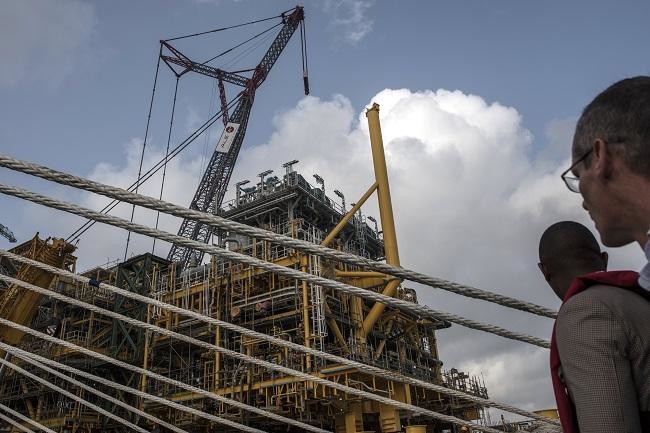
Biden to host Jordan king next week amid Gaza talks

- Hamas accused Israeli Prime Minister Benjamin Netanyahu on Friday of trying to derail the proposed Gaza deal with his threats to launch an operation in Rafah
- Israel has killed more than 34,000 Palestinians in Gaza, mostly women and children, according to the health ministry in the Hamas-run territory
WASHINGTON: US President Joe Biden will host Jordan’s King Abdullah II next week, the White House said Friday, as negotiations continue in the Middle East for a ceasefire in Gaza.
The meeting will be “private” and will be followed by a readout, White House Press Secretary Karine Jean-Pierre told reporters, without giving a date for the encounter.
The meeting comes against the backdrop of talks for a deal to release hostages and secure a ceasefire between Israel and Hamas in Gaza after nearly seven months of war.
The talks, which come after months of efforts by mediators Egypt, Qatar and the United States to broker a new agreement between the combatants, are at a critical juncture.
The United States has urged the Palestinian militant group to accept the “extraordinarily generous” offer.
But Hamas accused Israeli Prime Minister Benjamin Netanyahu on Friday of trying to derail the proposed Gaza deal with his threats to launch an operation in Rafah.
King Abdullah II last visited the White House in February when he called for an immediate ceasefire and warned an attack on Rafah would cause a “humanitarian catastrophe.”
In April, Jordan worked alongside the United States and other allies to shoot down Iranian drones that Tehran sent toward Israel, with the kingdom keen to avoid a wider conflict.
Hamas says Israeli PM trying to derail Gaza truce deal
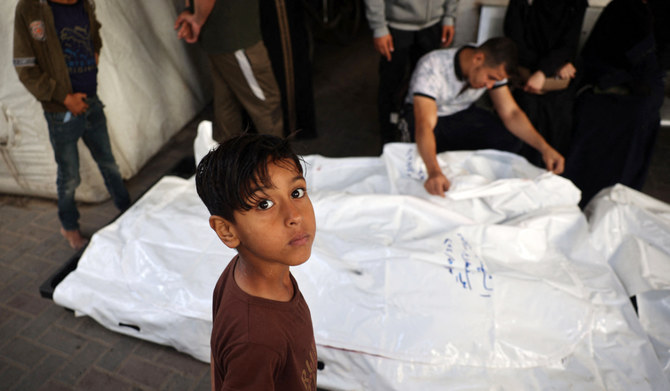
- Israel has killed more than 34,622 Palestinians, according to Gaza’s Health Ministry
GAZA STRIP, Palestinian Territories: A top Hamas official accused Israeli Prime Minister Benjamin Netanyahu on Friday of trying to derail a proposed Gaza truce and hostage release deal with his threats to keep fighting the Palestinian militant group.
“Netanyahu was the obstructionist of all previous rounds of dialogue... and it is clear that he still is,” senior Hamas official Hossam Badran told AFP by telephone.
Foreign mediators have waited for a Hamas response to a proposal to halt the fighting for 40 days and exchange hostages for Palestinian prisoners, which its chief Ismail Haniyeh has said the group was considering in a “positive spirit.”
A major stumbling block has been that, while Hamas has demanded a lasting ceasefire, Netanyahu has vowed to crush its remaining fighters in the far-southern city of Rafah, which is packed with displaced civilians.
The hawkish prime minister has insisted he will send ground troops into Rafah, despite strong concerns voiced by UN agencies and ally Washington for the safety of the 1.2 million civilians inside the city.
World Health Organization chief Tedros Adhanom Ghebreyesus said the agency was “deeply concerned that a full-scale military operation in Rafah... could lead to a bloodbath.”
“The broken health system would not be able to cope with a surge in casualties and deaths that a Rafah incursion would cause,” an agency statement said.
Badran charged that Netanyahu’s insistence on attacking Rafah was calculated to “thwart any possibility of concluding an agreement” in the negotiations brokered by Egyptian, Qatari and US mediators.
Israeli air strikes killed several more people in Rafah overnight, Palestinian medics and the civil defense agency said.
One bereaved resident, Sanaa Zoorob, said her sister and six of her nieces and nephews were killed.
Two of the children “were found in pieces in their mother’s embrace,” Zoorob said, appealing for “a permanent ceasefire and a full withdrawal from Gaza.”
The war broke out after Hamas’s October 7 attack on Israel resulted in the deaths of more than 1,170 people, mostly civilians, according to an AFP tally of Israeli official figures.
The militants also took some 250 hostages, of whom Israel estimates 128 remain in Gaza.
The army says 35 of them are dead, including 49-year-old Dror Or, a resident of the badly hit kibbutz Beeri, whose death was confirmed by authorities on Friday.
Israel’s devastating retaliatory campaign has killed at least 34,622 people in Gaza, mostly women and children, according to the Hamas-run territory’s health ministry.
Israel has weathered an international backlash over the spiralling death toll.
Pro-Palestinian protests that have rocked US campuses for weeks were more muted Friday after a series of clashes with police, mass arrests and a stern White House directive to restore order.
But similar demonstrations have spread to campuses in Britain, France, Mexico, Australia and elsewhere.
Turkiye announced on Thursday that it was suspending all trade with Israel, valued by the government at $9.5 billion a year.
President Recep Tayyip Erdogan said the move was intended to “force Israel to agree to a ceasefire and increase the amount of humanitarian aid to enter” Gaza.
Yemen’s Iran-backed Houthi rebels, who have carried out months of attacks on merchant shipping in the Red Sea in a costly blow to maritime trade, said they would extend their attacks on Israel-bound shipping to the Mediterranean “immediately.”
Israel’s siege has pushed many of Gaza’s 2.4 million people to the brink of famine.
US pressure has prompted Israel to facilitate more aid deliveries to Gaza, including through the reopened Erez crossing that leads directly into the hardest-hit north.
Food availability has improved “a little bit,” said the World Health Organization’s representative in the Palestinian territories, Rik Peeperkorn.
But he warned that the threat of famine had “absolutely not” gone away.
Five Israeli human rights groups that took Israel to court over restrictions on aid to war-torn Gaza said the state’s insistence that it has met its obligations was “incomprehensible.”
The government had told the supreme court that the steps it had taken went “above and beyond” its obligations under international law.
Gisha and four other Israeli non-profit organizations retorted that the shortages evident inside Gaza indicated “the respondents are not meeting their obligations, not to the required extent nor at the necessary speed.”
The US-based charity World Central Kitchen resumed operations this week, after suspending them in the aftermath of Israeli drone strikes that killed seven of its staff as they unloaded aid in Gaza on April 1.
The group’s kitchen manager Zakria Yahya Abukuwaik said: “We realized after the kitchen closed that many mouths were left hungry.”
World Central Kitchen was involved in an effort earlier this year to establish a new maritime aid corridor to Gaza from Cyprus to help compensate for dwindling deliveries by land from Israel.
The project suffered a new blow Friday when the US military announced high winds had forced troops working to assemble a temporary aid pier off the Gaza coast to relocate to the Israeli port of Ashdod.
“The partially built pier and military vessels involved in its construction have moved to the Port of Ashdod, where assembly will continue, and will be completed prior to the emplacement of the pier in its intended location when sea states subside,” US Central Command said in a statement.
Several Arab and Western governments have also airdropped aid into northern Gaza. Civil defense spokesman Mahmud Basal said one person was killed and several injured when they were hit by falling pallets.
Materials sector dominates TASI trading in first quarter of 2024

- Saudi Aramco topped the list with a market capitalization of SR7.47 trillion: report
RIYADH: The materials sector led trading on Saudi Arabia’s Tadawul All Share Index, accounting for approximately SR87 billion ($23.2 billion) or 15.11 percent of the market, according to TASI’s 2024 first-quarter report.
SABIC, the largest component of this sector, boasted a market capitalization of SR234.9 billion, with trading value reaching nearly SR7 billion.
The banking sector trailed with transactions valued at SR71.22 billion, comprising 12.37 percent of the market. Al-Rajhi Bank took the lead in market capitalization within the sector and secured the second spot in trade value totaling SR23.62 billion.
In a February report by Bloomberg, Al-Rajhi Bank, seen as an indicator of Saudi Arabia’s growth strategies, exceeded the performance of JPMorgan Chase & Co., exhibiting nearly a 270 percent surge in shares since the initiation of Vision 2030. It has outpaced both local and global competitors, including state-supported banks, emerging as the largest bank in the Middle East and Africa, boasting a market cap of around $95 billion.
According to Morgan Stanley analysts led by Nida Iqbal, as reported by Bloomberg, “We see it as a long-term winner in the Saudi bank sector … While Al-Rajhi is best placed for a rate-cutting cycle, we believe current valuation levels reflect this.”
Gulf central banks, including Saudi Arabia’s, frequently align their policies with those of the Federal Reserve to maintain their currency pegs to the dollar. According to Bloomberg Intelligence senior analyst Edmond Christou, a reduction in Fed rates could potentially bolster Al-Rajhi Bank’s profitability and expansion, as it will encourage gathering cheap deposits while enabling it to issue debt at more attractive levels.
In this period, the energy sector secured the third position in terms of value traded, reaching SR55.4 billion. Saudi Aramco topped the list with a market capitalization of SR7.47 trillion and registered the highest value among companies traded on the index, totaling SR28.82 billion.
In March of this year, Aramco announced a net income of $121.3 billion for its full-year 2023 financial results, marking the second-highest in its history. Aramco credited these results to its operational flexibility, reliability, and cost-effective production base, underscoring its dedication to delivering value to shareholders.
Tadawul’s quarterly report also indicated that the transportation sector recorded the fourth-highest value traded at SR39.25 billion, equivalent to 6.82 percent of the market. Among the top performers in this sector was cargo firm SAL Saudi Logistics Services, ranking third in value traded on the TASI during this period, following Aramco and Al-Rajhi Bank, with a total value of SR22.74 billion.
SAL debuted on the main market of the Saudi Exchange in November last year. With aspirations to manage 4.5 million tonnes of air cargo by 2030, Saudi Arabia is empowering its logistics sector from a supportive role to a pivotal driver of economic growth.
SAL, in which the Saudi government holds a 49 percent stake through the Saudi Arabian Airlines Corp., experienced a 30 percent surge in its share price during its initial public offering, raising $678 million and becoming Saudi Arabia’s second-largest IPO of the year.
In a January report by Forbes, SAL’s CEO and Managing Director Faisal Al-Beddah emphasized the company’s potential to shape the future of logistics in Saudi Arabia and beyond. He stated: “Logistics is the backbone of any economy. Now we are ready. We have the rotation, we have the infrastructure, we have the regulations, and most importantly, we have the mindset and the technology for Saudi Arabia to be the leading connecting logistics hub in the region.”
The top gainer during this period in terms of price appreciation was MBC Group, with a quarter-to-date percentage change of 127.6 percent, according to Tadawul.
Saudi Arabia’s MBC Group, a media conglomerate, debuted as the first new listing on TASI in 2024. Its trading began on Jan. 8. The company raised SR831 million through its initial public offering.
Saudi Steel Pipes Co. in the materials sector was the second highest gainer, with price appreciating by 88.15 percent.
Etihad Atheeb Telecommunication Co. had a QTD price percentage change of 81.91
percent making it the third-highest gainer on the exchange during this period.
TASI concluded the first quarter of 2024 with a 3.6 percent increase, climbing by 435 points to reach 12,402 points.
Saudi banks’ funding profile changing on rising mortgage demand: S&P Global

RIYADH: Saudi banks are expected to pursue alternative funding strategies to deal with the rapid expansion in lending, fueled by the demand for new mortgages, according to S&P Global.
In its latest report, the credit-rating agency stated that the funding profiles of financial institutions in the Kingdom are set to undergo changes, primarily driven by a state-backed initiative to boost home ownership.
According to the analysis, mortgage financing represented 23.5 percent of Saudi banks’ total credit allocation at the end of 2023, compared to 12.8 percent in 2019.
“The ongoing financing needs of the Vision 2030 economic initiative and relatively sluggish deposits growth, is likely to incentivize banks to seek alternative sources of funding, including external funding,” said S&P Global.
The report also predicted that this pursuit of external funding could potentially impact the credit quality of Saudi Arabia’s banking sector.
According to the US-based rating agency, lending growth among Saudi banks has outpaced deposits, with the loan-to-deposit ratio exceeding 100 percent in 2022, up from 86 percent at the end of 2019.
S&P Global expects this trend to persist, particularly with corporate lending playing a more significant role in growth over the next few years. “We consider Saudi banks are likely to turn to alternative funding strategies to fund that expansion,” the report said.
HIGHLIGHTS
100%
According to the US-based rating agency, lending growth among Saudi banks has outpaced deposits, with the loan-to-deposit ratio exceeding 100 percent in 2022, up from 86 percent at the end of 2019.
It added: “We consider, however, that the risk created by the maturity mismatch is mitigated by the relative stability of Saudi deposits.” The agency also predicted that Saudi banks’ foreign liabilities will continue to increase, rising from about $19.2 billion at the end of 2023 to meet the funding requirements of strong lending growth, particularly amidst lower deposit expansion.
The report highlighted that Saudi banks have already tapped international capital markets, and the credit rating agency expects this trend to continue for the next three to five years.
According to S&P Global, the Saudi banking system could transition from a net external asset position of SR42.9 billion, or 1.6 percent of lending, at the end of 2023 to a net external debt position within a few years.
In April, S&P Global, in another report, stated that banks in the Kingdom are anticipated to experience robust credit growth ranging between 8 to 9 percent in 2024.
The agency noted that this credit expansion will be propelled by corporate lending, fueled by increased economic activities driven by the Vision 2030 program.
Moreover, the report added that the Saudi government and its related entities are expected to inject deposits into the banking system, thereby supporting the credit growth of financial institutions in the Kingdom.
How sustainable tourism can help preserve Saudi Arabia’s iconic desert wildlife

- With desert tourism on the rise, experts say visitors and developers have a responsibility to respect local fauna
- The deserts of Saudi Arabia are home to more than 4,000 animal species, many of them critically endangered
ALULA: Although Saudi Arabia is home to a wealth of ecosystems, from its coastal mangroves and coral reefs to its high-altitude forests and lush oases, the Kingdom is perhaps best known for its deserts.
However, these landscapes, which are fast becoming popular with outdoor adventurers, are home to a remarkable array of animals, which inhabited the region long before the arrival of humans.
Despite the hardiness of these animals, given the harshness of their environment, the encroachment of humans into these pristine habitats is raising concerns among conservationists.

“The rapid growth in tourist flows in recent decades has been accompanied by diversification, both geographically, and in terms of tourism segments or products,” Basmah Al-Mayman, Middle East regional director of the UN Tourism (formerly UN World Tourism Organization), told Arab News.
“Desert destinations have shared in the benefits of this double-diversification process, making it an even more pressing priority to define a sustainable approach to tourism development in desert areas.”
As a Saudi national herself, Al-Mayman recognizes the value of the Kingdom’s precious ecosystems as a source of revenue and national pride. However, she believes the tourism industry, developers, and travelers themselves have a responsibility to act sustainably.
Opinion
This section contains relevant reference points, placed in (Opinion field)
“In the desert, more than anywhere, with destinations still relatively untouched by the adverse effects tourism can bring, sustainability represents a particularly critical challenge,” she said.
“The messages conveyed by UN Tourism are not only preventive in character, but also offer stakeholders at international as well as local levels the advice and tools they need to combat poverty and desertification while enabling tourism to properly play its role as a vehicle for development.”
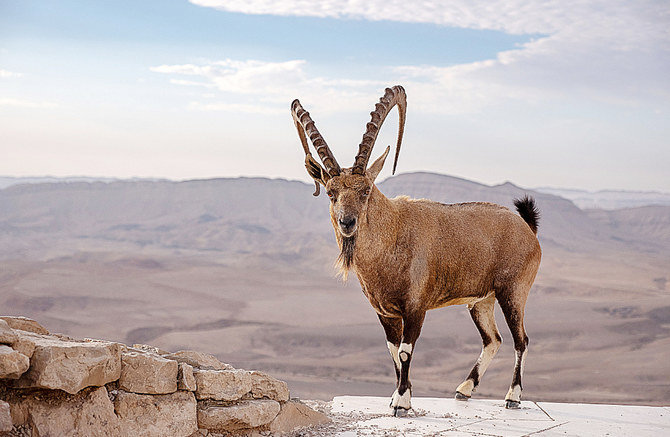
According to UN Tourism, sustainability principles refer to the environmental, economic, and socio-cultural aspects of tourism development. A balance must be established between these dimensions to guarantee its long-term sustainability.
Sustainable tourism should therefore make optimal use of environmental resources that constitute a key element in tourism development, while maintaining essential ecological processes and helping to conserve natural heritage and biodiversity.
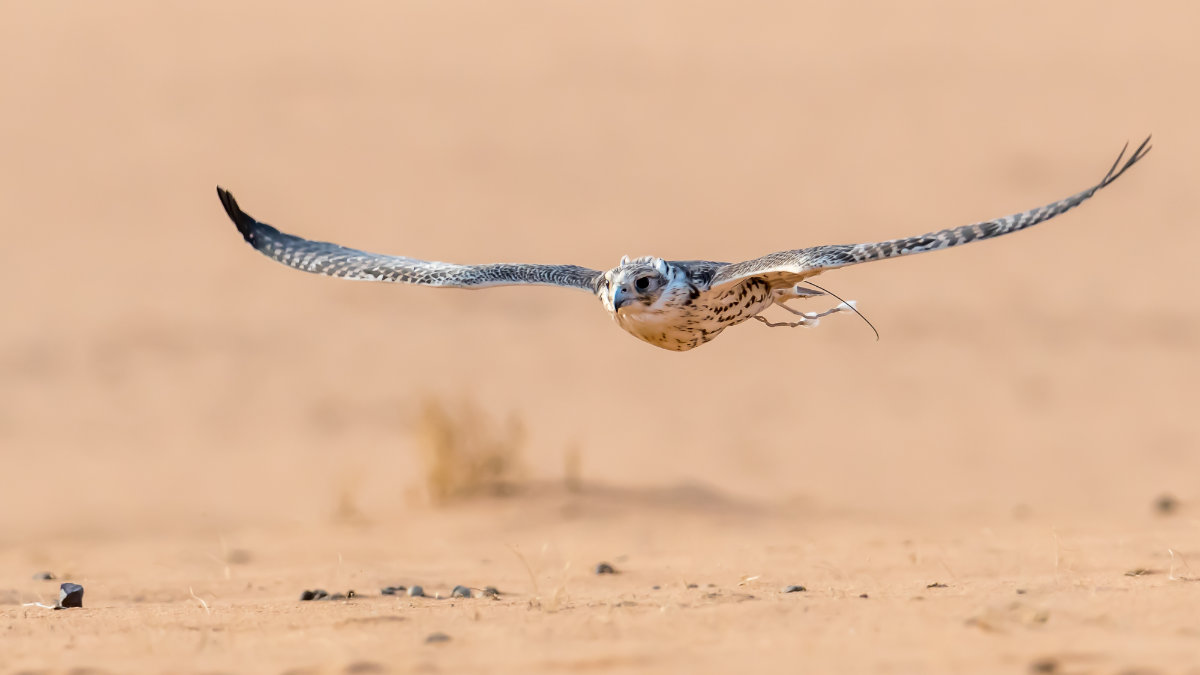
As the largest country in the Middle East, occupying more than 80 percent of the Arabian Peninsula, Saudi Arabia is home to five distinct climatic regions.
These biomes include coastal fog desert, the southwestern savanna foothills, the southwestern montane woodlands, the Arabian Desert, the Nubo-Sindian tropical desert, and areas of semi-desert.

Extensive hunting in the 19th century resulted in the population decline of many of Saudi Arabia’s indigenous animals, including oryx, leopards, and cheetahs. The Kingdom has since imposed bans on poaching and launched breeding programs to help bolster populations.
Other wildlife found in these habitats included striped hyenas, mongoose, baboons, sand cats, and hopping desert rodents known as jerboa. Visitors willing to brave the region’s harsh temperatures may be rewarded with a glimpse of a Nubian ibex, sand gazelles, or a whole array of reptiles.
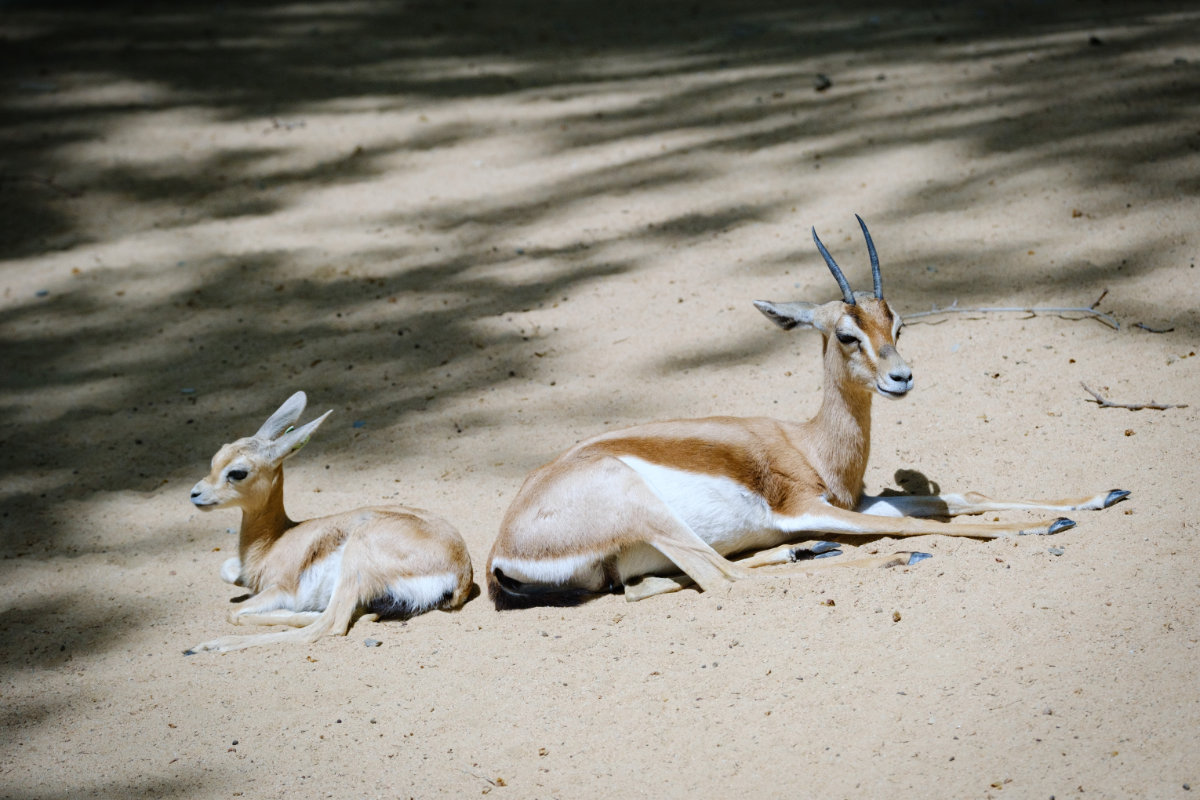
Occupying some 25 percent of Saudi Arabia’s territory, the Rub’ Al-Khali, also known as the Empty Quarter, is anything but what its name might suggest. The world’s biggest sand desert is in fact home to a dizzying array of wildlife.
Likewise, the Kingdom’s scrublands, steppes, mangroves, volcanic fields, palm oases, and mountain ranges are teeming with creatures — nesting, hunting, feeding, and burrowing, many of them out of sight, coming out only in the cool hours of night.
DIDYOU KNOW
• 2024 was designated the Year of the Camel by the UN and Saudi Ministry of Culture.
• AlUla has made great strides in ensuring that desert tourism is eco-friendly.
• UN Tourism has put forth structured targets to support sustainable desert tourism.
• National Center for Wildlife estimates there are 4,481 endangered species in the Kingdom.
No desert animal is perhaps better recognized than the camel. It is because of its iconic status that the UN and Saudi Arabia’s Ministry of Culture has designated 2024 as the “Year of the Camel.”
This year, Saudi Arabia will host several camel-centric events and organize special spaces to educate the public about these much-loved “ships of the desert.”
Just this past week, the second ever AlUla Camel Cup was celebrated in the Kingdom’s ancient northwestern region. The four-day event centered on the animal, which has become synonymous with the country’s identity.

The camel has been the Bedouin’s best friend for centuries, as well as a loyal companion and a lifeline. Even the Prophet Muhammad relied on camels for transportation and as a source of food and fuel.
Camels are not the only animals getting their moment in the limelight. Saudi Arabia’s National Center for Wildlife and the Saudi Green Initiative have been working hard to ensure none of the Kingdom’s fauna is overlooked.
Assigning an animal to be championed during a specific year, month, or day has been instrumental in raising awareness about the wellbeing and conservation of the region’s distinctive species.
In 2022, the Royal Commission for AlUla launched a campaign for the recognition of “International Arabian Leopard Day.” In 2023, the UN General Assembly unanimously designated Feb. 10 as the “International Day of the Arabian Leopard.”
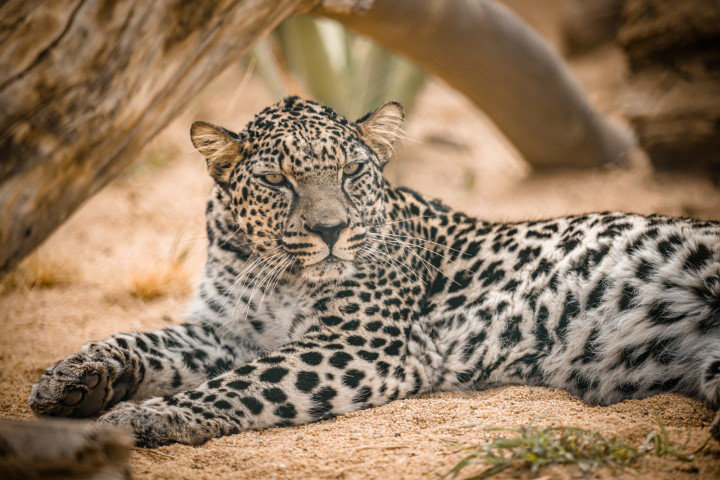
The Arabian leopard once enjoyed a range stretching across a large swathe of the Arabian Peninsula, from southern Jordan to Yemen.
But, after years of human encroachment on its habitat, resulting in the depletion of its natural prey, the International Union for Conservation of Nature listed the big cat as a critically endangered species.
Saudi Arabia has long been at the forefront of animal conservation, with the Imam Abdulaziz bin Mohammad Royal Reserve Development Authority reintroducing more than 220 endangered species into the wild in the Kingdom’s royal reserves over the past five seasons.

Much of this has been done in tandem with sustainable tourism initiatives, designed to protect the Kingdom’s ecosystems, while providing jobs, services, and prosperity to local communities.
For instance, in the ancient deserts of northwest Saudi Arabia, framed by curious rock formations with their dramatic silhouettes, the lush green oasis of AlUla has been continuously occupied by humans since before the 12th century.
Throughout that time, animals have been vital to the area and to the livelihoods of its human residents.
In line with Saudi Vision 2030, the Royal Commission for AlUla has launched an initiative to rehabilitate 65,000 hectares of degraded land, activating the space and resurrecting the harmony between humans and nature — an organic partnership that has defined the region for millennia.

Besides AlUla, nearly every other desert space in the Kingdom has introduced curated tours that mindfully lead humans into the wilderness with the intention of enjoying, honoring, and respecting the animals that live there.
The Kingdom has made significant strides in ensuring that its animals continue to flourish in a rapidly changing world and a nation that aims to become a major tourism magnet in the years to come.
But with more people, vehicles, and infrastructure coming to the desert, it is a collective responsibility to ensure visitors do so without disturbing these precious ecosystems and their animal inhabitants.





